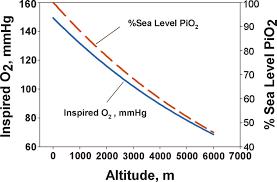Training with Masks
by Erik Castiglione
As of last Monday, there is now a mask mandate in all gyms in CT. Considering the extensive (and expensive) precautions we’ve already taken to make sure everyone is safe here at Viking Athletics, I’m at least as frustrated as all of you that we now have to wear them even during conditioning. But, since there’s nothing to be done, it’s time to adapt and overcome. Let’s look at the benefits (beyond safety) of working out in a mask.
Training in masks is nothing new. If you’ve been around the CrossFit world long enough, you may recall the “High Altitude” training masks that were supposed to simulate training at higher altitudes. They made it harder to breathe, but they failed to simulate high altitude. This is an important distinction to understand because the masks we’re now required to wear function in a similar manner.

To understand how these masks work, we must first review how breathing works, physically speaking. Our lungs begin as (mostly) empty air sacks in our chests. Our diaphragms, which are dome shaped at rest, are located beneath our lungs. When we contract our diaphragms, the dome flattens, creating more space in our chests. According to the ideal gas law, P = nRT/V, which means that as volume (V) increases, the pressure (P) in our lungs decreases. Air flows from areas of high pressure to low pressure, so, to equalize the pressure, our lungs fill with air.
When we put some sort of restriction over the air intake, we need to make sure that there is enough airflow to get through it. If you think about air filters and HVAC systems, as a filter becomes dirtier over time, less air gets filtered, because less air can get through it. Similarly, most HVAC systems are designed to handle MERV 8 air filters. To filter Covid-19 particles, a minimum of MERV 13 is required. Many places are not able to simply upgrade their filters, because their HVAC systems don’t create enough of an air pressure differential to force air through the filter.
In the case of the human body, we’ve already established that the diaphragm is the muscle that creates a pressure differential when it contracts. By placing a restriction in front of the air intake, in this case, our mouths, we force the diaphragm to work harder. So, when you wear an Altitude Training mask, or any kind of mask like we’re required to now (especially when they’re wet!), we must contract our diaphragms harder to draw in air.
Before we get into the benefits of training our diaphragms, let’s clear up why this is not the same thing as training at altitude. With high altitude training, there’s a smaller concentration of oxygen in the air. By taking a normal breath (diaphragm contracting normally), you get less oxygen than you would at sea level. If you can adapt to less oxygen for training, you get a boost when you return to an environment with more oxygen. When we train with masks, the concentration of oxygen in the air does not change. Even though our diaphragms work harder, we still get the same amount of oxygen. So, high altitude deprives us of oxygen, but our diaphragms function normally. Masks give us the same oxygen, but make us contract our diaphragms harder. In both cases our rate of breathing increases, but the mechanism that causes this is different.

So, if masks don’t simulate high altitude training, what benefit do we get by wearing them? Well, if we have strong diaphragms, then when our mouths are not restricted, we can breathe with less effort. So, training with masks makes exercise easier when we’re able to remove them. More importantly, when we’re moving under load, it can be difficult to draw breath. Think of doing heavy front squats when you’re already winded, or trying to take a deep breath after a heavy clean before performing a jerk. The weight on our shoulders makes it difficult to contract our diaphragms and draw in air. Having stronger diaphragms will help us in these situations.
We’re stuck with masks for the foreseeable future, so we need to learn to breathe with them. Focus on inhaling through your nose, and out through your mouth. Use long, deliberate breaths when you can. In a couple weeks, you’ll forget the mask is even there. And, when we’re finally through this pandemic, you’ll reap the benefits of having trained with one. See you in the gym.

